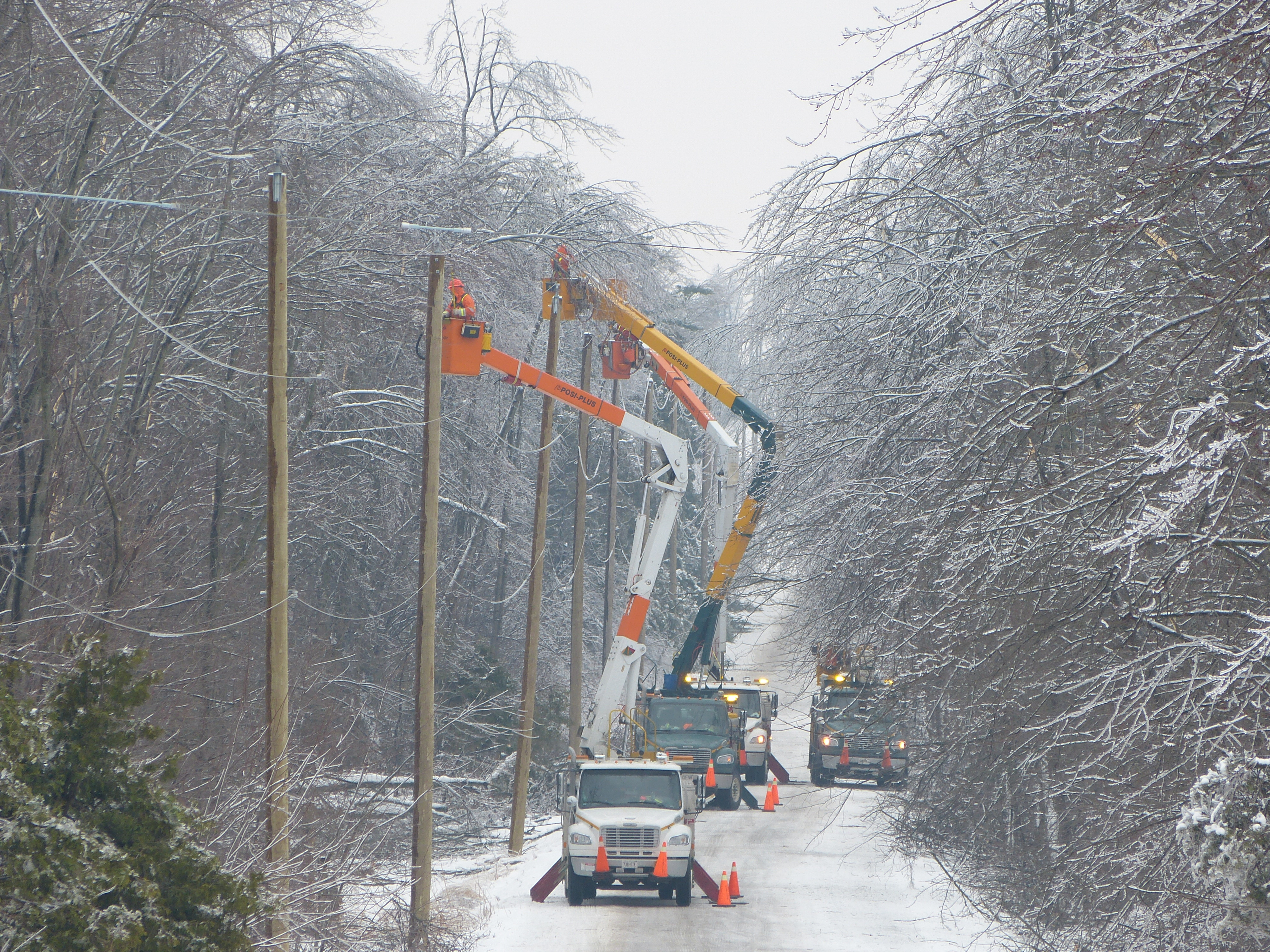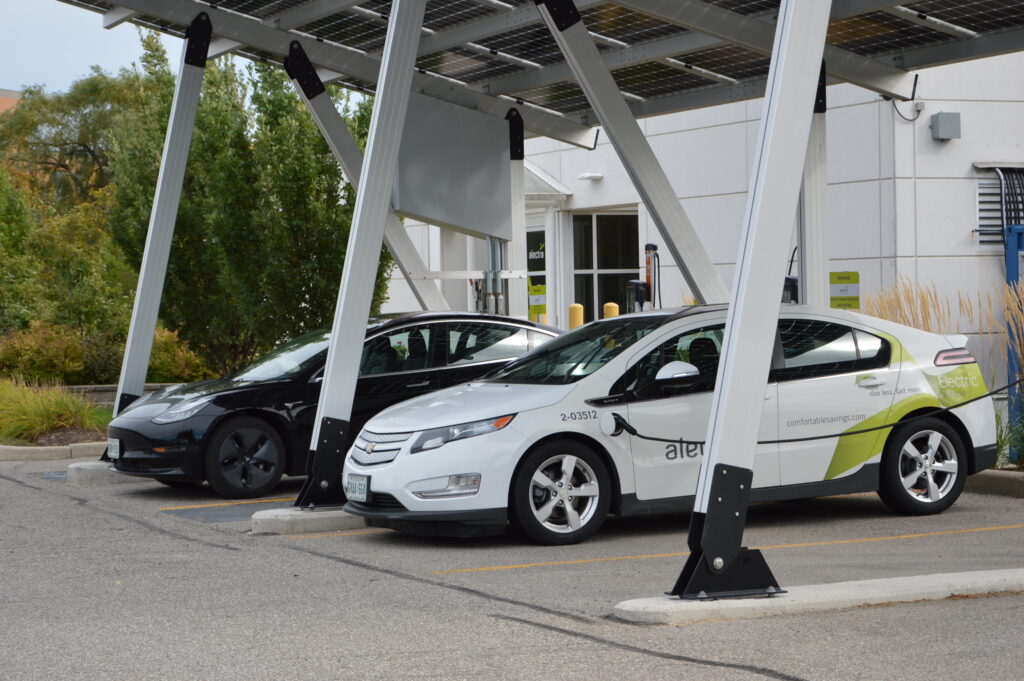Start Small, Go Bigger, and Get Aspirational

Caroline Karvonen of Alectra describes the steps involved with creating an ambitious but attainable carbon emissions target. But what happens next, when you’ve already picked the low-hanging fruit? The answer is simple: there’s always more to be done. Get inspired to reach further by reading on…
Alectra Inc., the largest municipally-owned energy company in Canada based on customers served, announced in May 2021 that it will be a net-zero emissions company by 2050., making the company one of the first energy distribution companies in Ontario to commit to a target and a timeline for reducing greenhouse gas (GHG) emissions. By 2025, we plan to reduce our corporate operations GHG emissions by 38% compared to a 2016 baseline and will reach net-zero emissions by 2050. With this bold step, Alectra is aligned with its key stakeholders, including our municipal shareholders (the communities we serve), our customers and our employees.
It is a proud achievement in itself to commit to these targets, but how did we get here? And more so, how does one go about setting and reaching a GHG emission reductions target?
Clean Slate
Our journey began in 2017 with the creation of Alectra: a new electricity distribution and integrated energy solutions company formed by the consolidation of four utilities (now five as of 2019) in the Greater Golden Horseshoe area of Ontario. The consolidation processes essentially reset business for the four companies and provided a new beginning – the proverbial ‘clean slate.’ This fresh opportunity, or the concept of one, can be tied to anything new: a new strategy, a new product, a new service, or an updated set of metrics on a corporate scorecard. Find a catalyst, a launchpad, calculate your path and get building your GHG reduction (zero-emission) rocket.
Materiality Assessment
Within this new corporate entity, we wanted to be industry leaders that could make a real difference. To accomplish this goal, we determined what our top sustainability issues were through a materiality assessment. A stakeholder engagement process was held internally and externally to the company, producing results that indicated 95% of respondents want Alectra to be a sustainable company. One-on-one interviews were conducted with Board members, Board committee leaders, customers, and employees. A Corporate Sustainability Committee (a cross-functional team of senior leaders) was established to help guide this process. It was crucial to include a corporately diverse representation from the supply chain (including fleet and facilities), risk, business transformation, finance, operations and HR.
This committee determined eleven issues to be material – many were obvious; like ‘Health & Safety and ‘Waste & Materials Management.’ ‘Climate Change’ was interestingly not on the original top issues list, but all issues were impacted by climate change. Respondents indicated that ‘Infrastructure Modernization’ was important to improve resilience to extreme weather events from climate change. Therefore, the Committee moved ‘Climate Change’ onto the list from the qualitative assessments.

During the assessment process, the Committee also established the corporate Sustainability Commitment statement:
“As a sustainable company, Alectra is committed to empowering our customers, communities, and employees, protecting the environment, and embracing innovation to meet today’s needs and the needs of future generations.”
Corporate Sustainability Committee at Alectra
This statement was approved by the Executive Committee, the Corporate Governance & Nominating Committee of the Board which oversees corporate ESG (environment, social and governance) matters. This corporate commitment statement / position further strengthened sustainability as a key issue at all levels.
Small Target
In 2019, Alectra set a modest GHG emissions reduction target of 20% below the 2016 baseline by 2026. While this was arbitrary, it was a minimum requirement by the Green Economy Hubs in Ontario of which we were members. This target at 20%, or any established level, created visibility of the GHG reduction issue and initiated discussions at all levels of the organization. The adage, “what gets measured gets done,” is particularly relevant to work in sustainability: measured elements become an interest to individuals because their performance is potentially affected by it. At the end of 2019, Alectra reported a GHG emissions reduction of 19%, which has since been adjusted to 17% due to updates to the emissions factor of electricity in Ontario. After achieving 17% of the initial 20% goal, the natural inquiry was – what is next?
Bigger Target
The most crucial element of working towards the next target was the confidence gained while creating a track record of achieving the small target. With this confidence, as well as the support of our Executive and Board, we went to work on determining the new and bigger target. The open-source Science Based Target (SBT) methodology was consulted to move beyond an arbitrary reduction target. Using the SBTi tool, on the “1.5-degree” pathway, it was determined that a 38% reduction by 2025 was the appropriate target for our corporate operations emissions. This was a significant increase from the original target of 20% and could result in greater corporate involvement and discussion if this could indeed be achieved. The SBT is ambitious, but the actions to reach this target are generally known. They fall into the standard categories of electrification, fuel-switching, efficiency improvements, behaviour change, and sustainable procurement. However, this is a significant leap beyond the first smaller target.

While many emission reduction actions within our Fleet and Facilities division are already underway, a broader, complete suite of initiatives are being developed by a new cross-functional team dedicated to implementing and reporting on GHG reductions. This team is composed of the business units directly involved in the creation of GHGs including fleet, facilities and grid operations and services. The team also includes support groups including environmental services, finance, and communications.
Aspirational Target
The ultimate GHG reduction goal is, of course, net-zero. This 2050 net-zero target was announced along with our 38% reduction target by 2025. There can be hesitancy toward this target as the specific pathway to this journey is not mapped out, but the actions will follow in principle what is established to reach the 38% target. The commitment has also been solidified at all levels and we look forward to meeting this challenge.
Collaboration among all stakeholders has been one of the most important elements of the GHG reduction target setting and the associated emission reduction action plans. The quote “if you want to go fast, go alone. If you want to go far, go together” rings true every day. Reaching the ultimate Net-Zero goal will indeed take all of us to achieve.

















